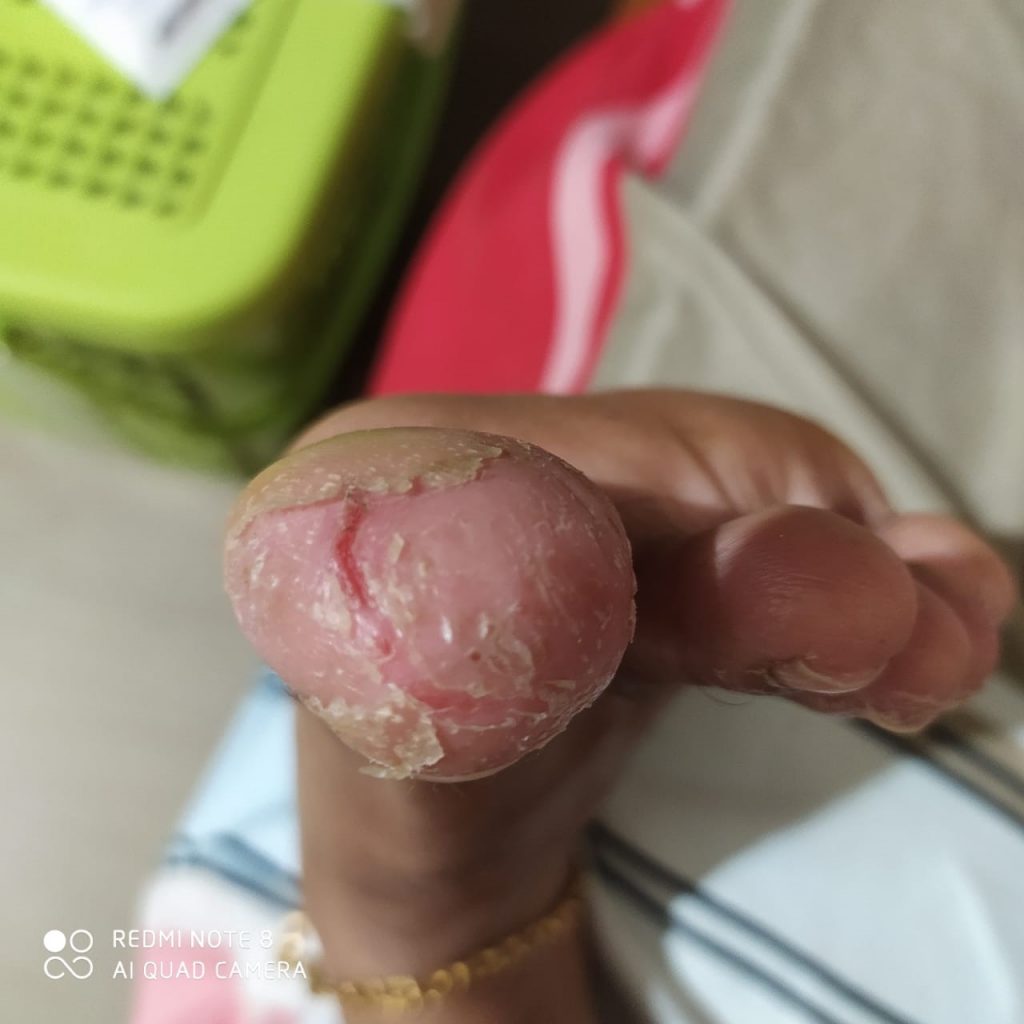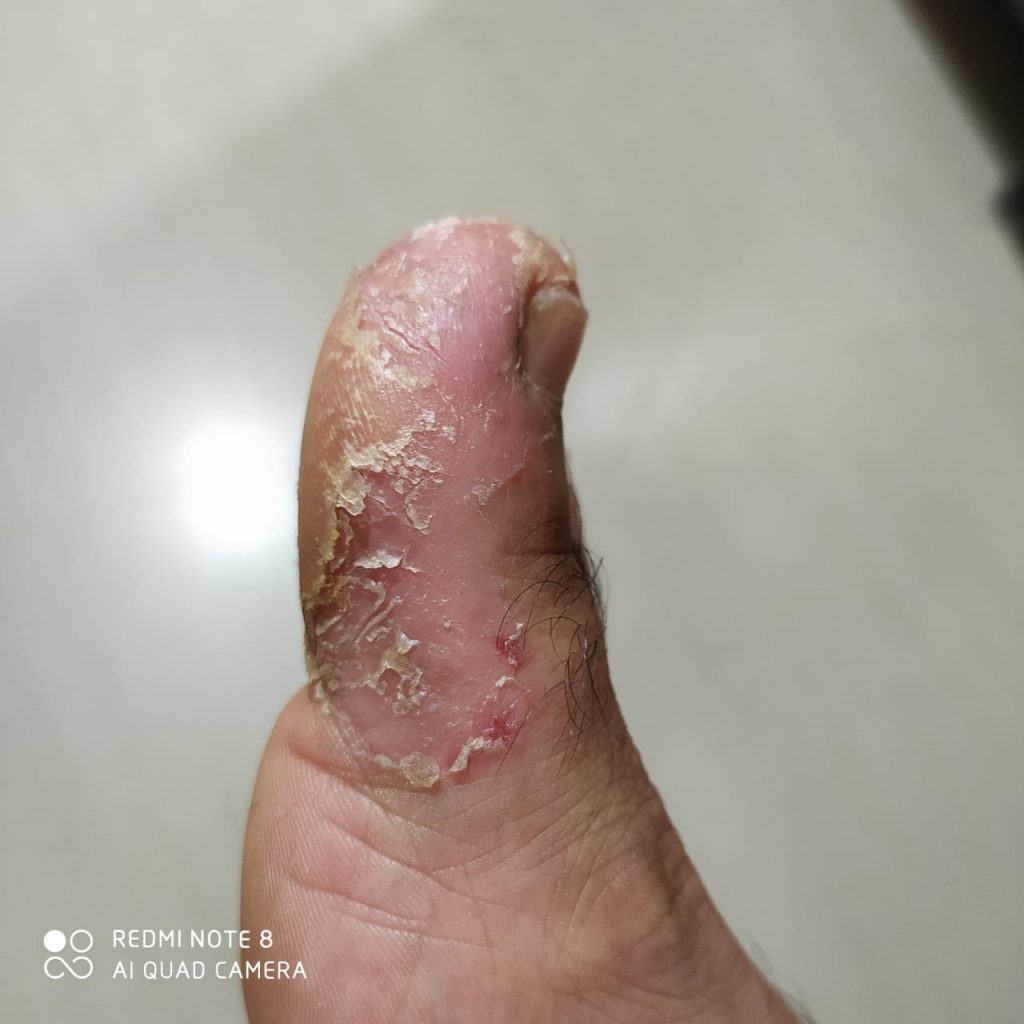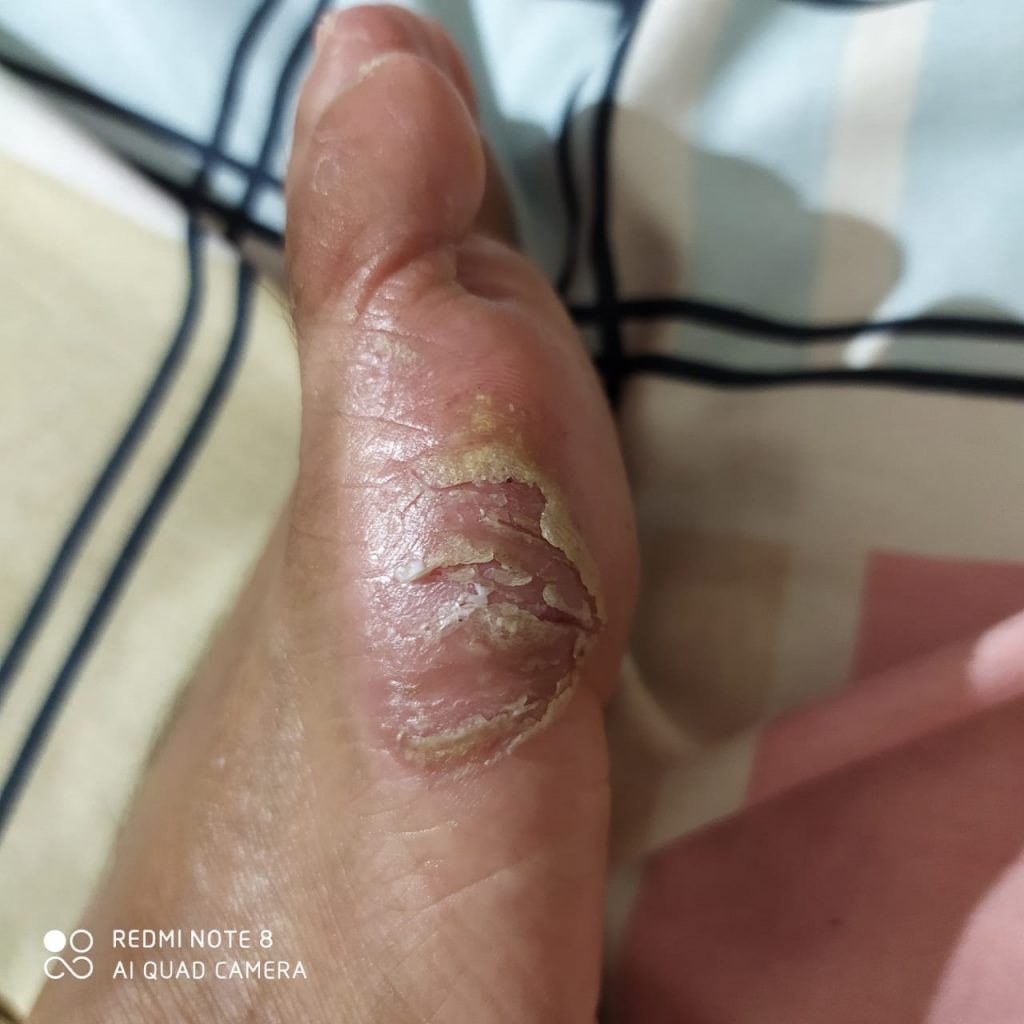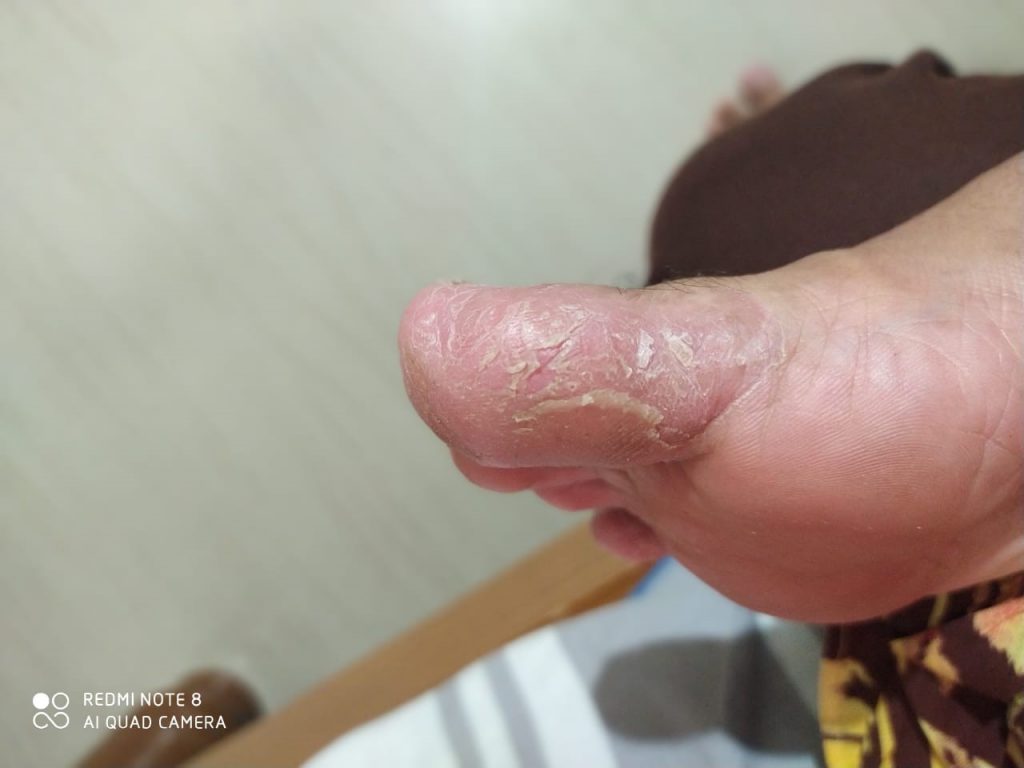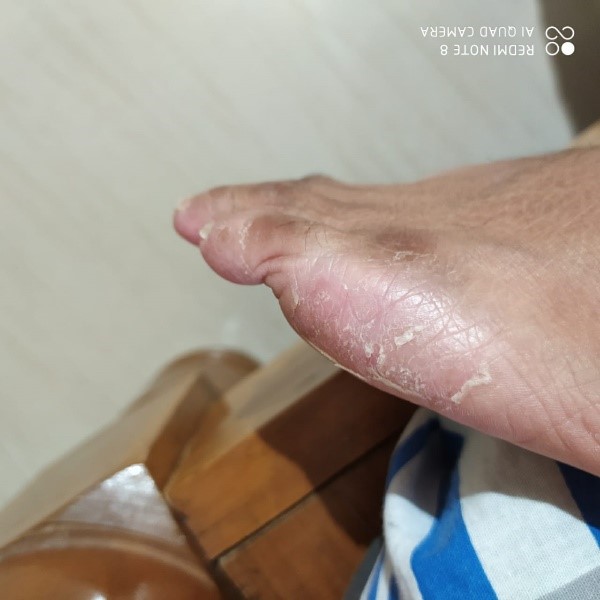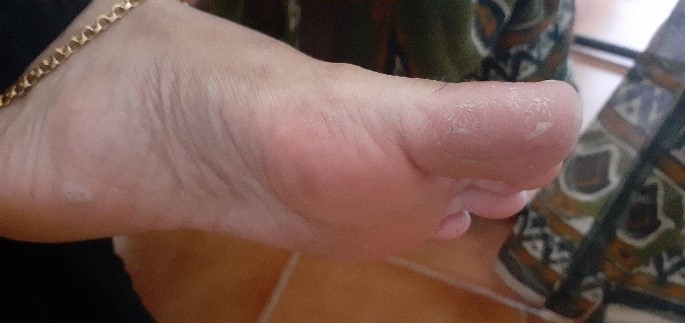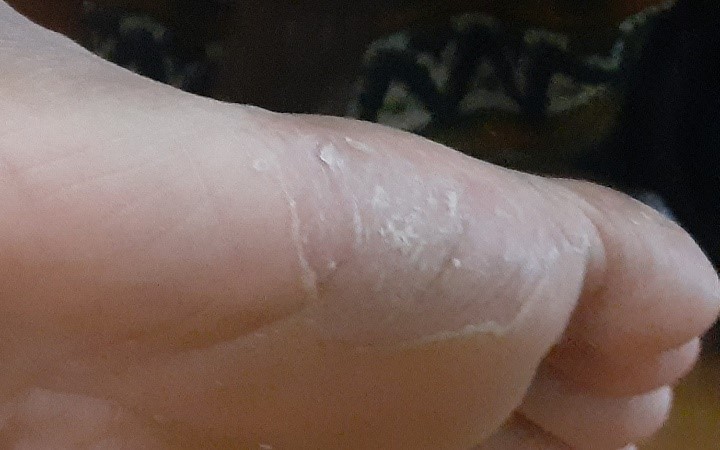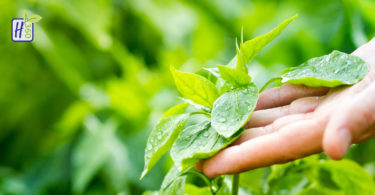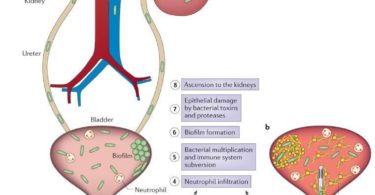Author: Dr. Madona Joseph BHMS MD PGDBEME
Professor, Head of the Department
Forensic Medicine &Toxicology
Father Muller Homoeopathic Medical College
Deralakatte Mangaluru 575018
Co-Author: Dr.Dhanya s
PG Scholar
Department of Homoeopathic Materia Medica
Father Muller Homoeopathic Medical College
Deralakatte Mangaluru 575018
ABSTRACT: A case of Contact Dermatitis treated Homeopathically with Anti -miasmatic medicine based on symptom similarity.
KEY WORDS: Contact Dermatitis, Homoeopathic medicine, Antimiasmatic .
Abbreviation: += Present, G=Good, = amelioration, s=same, D=decreased, A=Absent.
INTRODUCTION: Contact Dermatitis is an inflammatory process in skin caused by exogenous agent that directly or indirectly injure the skin .Injury may be caused by inherent characteristic of compound irritant dermatitis (ICD), Agents that cause allergic contact dermatitis induce an antigen specific immune response.
EPIDEMOLOGY: Reported prevalence of Allergic Contact Dermatitis (ACD) to chromate among this population usually is more than 10%. The prevalence among symptomatic construction workers who were patch tested is more than 45%. Such high prevalence is in sharp contrast with the rate of around 1% among the general population.
Types of contact dermatitis: Irritant contact dermatitis and Allergic contact dermatitis
Irritant contact dermatitis: This is most frequently caused by occupational exposure, either as an industrial contact or house hold contact. Occasional recreational and accidental exposure.
Predisposing factors:
• Patient factors – Dry skin, Atopic individual.
• Environmental factors – occupation (hair dressers), protective measures (using gloves to reduce ICD).
Clinical feature – symptoms ranging from little dryness, redness or chapping to varying severity of dermatitis to an acute caustic burn.
• Acute exudative lesions: if exposure to a strong irritant.
• Dry dermatitic lesions: if exposure is chronic and repeated to a weak irritant.
Diagnosis: Patch test confirmatory
Allergic contact dermatitis: It is caused due to immunological pathway, being type 4 delayed hypersensitivity .Common allergens are plants, cosmetics, medicines, rubber.etc..
Clinical features – Patients presents either with acute and chronic eczema.
• Acute eczema – progresses from erythema to oedema to papules then vesicle formation.
• Chronic eczema – manifests as itchy eruption, scaly, bleeding later Lichenified plaques.
Diagnosis: Patch test confirmatory.
CASE HISTORY:
A 25 year old female presented with complaints of symmetrical scaly eruptions on bilateral feet and toes .with cracks, bleeding .itching with burning .Complaints started since 8months, after using tight rubber shoes. Her complaints started as eruptions with itching, followed by bleeding with cracks. Itching increases by scratching leads to bleeding .Itching is better by washing with warm water. Patient has taken Allopathic medication for the same since the onset of the complaint.
Past History:
Nothing significant
Family History:
Nothing significant
Treatment History:
Taken Allopathic medication for presenting complaint.
PATIENT AS A PERSON:
Appearance: lean
Appetite: Good
Thirst: Thirst less (2-3 glasses per day)
Desire: sweets 2+
Bowel Habit: once /day, with no difficulty.
Bladder Habit: 4 times /day and once at night.
Sleep: Good (11 PM to 6 AM)
Thermal: chilly patient
Dreams: unremembered
Menstrual History:
F.M.P: 11 years of age
Regular cycle, 5-6 days flow, cramps in lower abdomen before menses.
Life space investigation:
Patient hails from a middle socioeconomic family. Had apparently a pleasant, childhood. She has 3 younger siblings. She got married at age of 22 years, it was an arranged marriage and she has a son. Her husband works abroad, he left 2 months back and patient misses her husband as she is close with him. She talks to everyone, gets offended easily, when angry shouts back, better by consolation. She completed her B.A history in 2015 and now doing correspondence course in M.A English. She likes to study further and want to become a teacher, she likes reading and cooking, wants to finish all her work on time.
General physical Examination:
Moderately built and moderately nourished
Well oriented with time, place and person.
No signs of pallor, cyanosis, clubbing, icterus and lymphadenopathy
Vital signs:
Temperature: afebrile at the time of examination.
Pulse: 74 beats /min
Blood pressure: 120/70mmhg
Local examination:
Skin: Feet, toes
Inspection: scaly eruption
Cracks present, bleeding
Systemic Examination:
Respiratory system:
Normal vesicular breadth sounds
No added sounds
Cardiovascular system:
S1 and S2 heard.
No murmur
Diagnosis
Contact dermatitis
MANAGEMENT:
General management
Diet
Avoid salty food
Avoid seafood
Drink lot of water
Eat vitamin c rich foods like orange, lemon and gooseberries
Ancillary measures
Avoid using tight shoes.
Maintain hygiene and clean area using septic measures
Homoeopathic management:
Sector totality:
Skin of bilateral feet and toes symmetrical scaly eruption 2+
Cracks +
Bleeding +
Itching 2+ warm water application.
Burning2+warm water application
Prescription
2/ 9/2020
- Sulphur 0/1 (2 days)
EMES 1tsp -0-0 - No 2 pills
TDS 1 week
Follow up criteria
- Thirst
- Itching
- Burning
- Eruptions
- Cracks
- Bleeding
Abbreviations: += Present, G=Good, = amelioration, s=same, D=decreased, A=Absent.
Follow ups
16 /9 /2020
1 2 3 4 5 6
G > > > > >
Prescription
- PL 1 TSP
TDS - NO 2 PILLS
6-6-6 2weeks
21 /10 /2020
1 2 3 4 5 6
G > > > + >
Prescription
- GRAPHITES 30
TDS - NO 2 PILLS
2-2-2 15 days
As the patient has used allopathic external application for the presenting complaint her disease is suppressed and clear picture of the disease was not available, so sector totality was taken and based on symptom similarity medicine was prescribed.
CONCLUSION: Patient named Mrs F came with the complaint of scaly eruptions, cracks and itching, burning and bleeding of feet and toes bilaterally. The case was diagnosed as contact dermatitis. Sulphur 0/1prescribed as Anti- Miasmatic remedy Patient completely recovered from the eruptions of skin, cracks, itching, burning and bleeding.
REFERENCES:
- HARRISONS PRICINCIPLE OF INTERNAL MEDICINE 17th edition by Fauci, Braunwald, Kasper, Hauser. Longo, Jameson, Loscalzo.
- Illustrated synopsis of DERMATOLOGY AND SEXUALLY TRANSMITTED DISEASES by Neena Khanna.
- HOMOEOPATHIC MATERIA MEDICA – William Boericke
- MATERIA MEDICA OF HOMOEOPATHIC MEDICINES – Dr S.R.Phatak
- THE CHRONIC DISEASES Their peculiar nature and Their Homoeopathic cure – Samuel Hahnemann.
